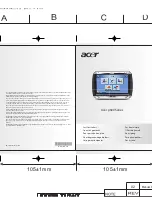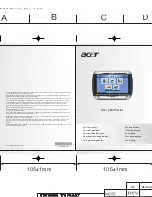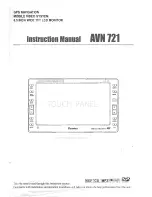- 5 -
GSM Cellular Service Reporting
SageTracker uses the GSM cell phone network to send its
reports to the tracking system, so its ability to connect to the
internet is limited by the coverage of this network. Coverage in
populated areas is generally very good, but can be limited in
remote regions.
Battery Mode Operation
When operating in the battery mode, the device will power
down during long periods without motion. The unit will
automatically power back up when motion is detected, but
there will be a lag between power up and the first report from
the device. This delay will be can range between 2 and 10
minutes depending upon the GPS signal strength.
Troubleshooting
The device is reporting, but there is no address or the
reported address is not correct.
The most likely cause is a weak GPS satellite signal. This
problem can most often be remedied by moving the device to
an alternate location within the vehicle. Check the GPS LED to
see if it is blinking.
There are three possible causes for reports with an incorrect
address:
1.
No GPS Location reported during last GPS fix cycle: If
SageTracker was not able to generate a new location report
due to a weak or non-existent GPS signal, then the tracking
software will place the vehicle at the last known location on
the map and generate a report in the data table without an
updated address.
- 6 -
2.
Weak GPS Signal: If the column labeled “Satellites”
indicates that the report was generated with 4 or less
satellites, then the reading should be treated as an estimate
only. While estimate reports are often useful, they can on
occasion be completely erroneous.
The GPS LED will not illuminate, even under perfect GPS
conditions
The device may need to be reset. To reset the unit remove the
battery for one minute, then reinstall and retest.
Do’s and Don’ts with your SageTracker
Do
Place your SageTracker where it will have a clear line of sight to
the sky and receive a fix from the GPS satellites. Concealed
devices may give you fewer location fixes than devices left in
the open. Sometimes a slight adjustment in location can make
a big difference in the reporting quality.
Locations that tend to provide good reporting:
•
In the glove compartment
•
Under the passenger seat
•
Under the package shelf in the rear window
•
Inside a fiberglass bumper (not metal bumper)
•
On the dashboard (remove on hot, sunny days)
•
In the rear window (remove on hot, sunny days)
Locations that may reduce reporting quality:
•
In the trunk (Hatchbacks/SUV’s may be OK)
•
Completely underneath the vehicle
•
Inside the engine compartment (extreme heat)
•
In the wheel well (water spray)
•
Inside buildings or garages
•
In direct sunlight for extended periods (extreme heat)
Don’t

















